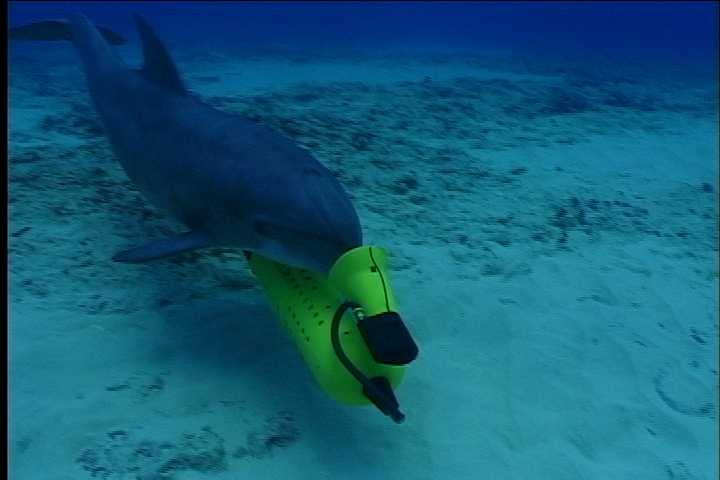Sure, You probably know that explosive ordnance disposal divers can disarm a mine hundreds of feet underwater, but they're often preceded by a did you know about their slippery, flippered advance team.
Marine mammals have been giving the Navy an edge for more than 50 years, deploying in 2003 for the Iraq invasion and to Cam Rahn Bay during the Vietnam War, detecting mines and keeping swimmers from sabotaging ships, according to Mike Rothe, the marine mammal program director at Space and Naval Warfare Systems Command in San Diego.
Today, they play a key role with EOD units and port security teams, Rothe told Navy Times in an April 6 phone interview.
The animals' main missions are mine detection, mine recovery and swimmer interdiction, as part of a civilian and contractor-led group of trainers and handlers.
During the Iraq invasion, dolphins and sea lions swam along the bottom of the Persian Gulf, tagging mines so that divers could find and disable them.
The dolphins are trained to disable mines themselves, Rothe said, but they have never worked on live explosives.

Using an MK 7 mine hunting system, a dolphin trains to detect and mark the location of mines sitting on the ocean bottom or buried in sediment.
Photo Credit: Navy
Back home, the animals help out at the underwater range in Southern California, finding mines that Navy and Air Force helicopter pilots drop to work on their qualifications.
"We have the latitudes and longitudes where the pilots thought they placed them... We go and find them all and we send the sea lion down and it hooks up with a line, and then they take a GPS fix and that's the score," he said.
At submarine bases in Kings Bay, Georgia, and Bangor, Washington, the animals help with port security.
The dolphins' sonar works as a back-up for electronic waterfront security, and the sea lions use their excellent eyesight and underwater directional hearing to distinguish other wildlife from human swimmers, who may be trying to spy on warships or plant mines.
"In Kings Bay, Georgia, that water's like coffee with cream in it," Rothe said. "It's nearly impossible to see anything, yet our sea lions are able to do a bang-up job in detecting swimmers."
If they find one, the sea lions return to the boat and are given a special cuff with a line attached, which they push onto the swimmer's thigh as a clamp. A security boat can then reels in the swimmer.
High speed, low drag
Today the animals help with operations, Rothe said, but the Navy originally got into the marine mammal business for a totally different reason.
Back in 1959, the Navy acquired a white-sided dolphin named Notty, hoping to study her design, as it were.
"Torpedoes did such a lousy performance in World War II, they wanted to see what they could learn from the animals [and] apply to torpedoes and submarines, to make them create less drag," Rothe saidtold Navy Times in an April 6 phone interview.
That didn't really go anywhere, he added. "But they did learn that these animals were pretty smart and could be trained to do a bunch of different things."
Today, there are 90 Atlantic bottlenose dolphins and 50 California sea lions in the program. Most of the dolphins were bred by the Navy in San Diego, from some that were caught in the wild by contractors back in the '80s.
Sea lions are much more difficult to breed, Rothe said, so the Navy has bought them from SeaWorld or adopted them from organizations that take in injured sea lions, as some aren't suited to return to the wild.
And, a few years ago, the Navy got a permit to collect nine pups from San Nicolas Island off the coast of California. Rothe said they won't need more any time soon, though.
With the wars in the Middle East winding down, the animals are maintaining their training and regularly joining in on exercises around the world, including the annual Rim of the Pacific Exercise.
The program is going strong, Rothe said, but he knows that its time is limited.
"The Navy's posture toward its marine mammal program has always been, we're going to have it until there's other hardware or technology that can do what they do," he said.
While there are unmanned underwater vehicles that can detect and disable mines, he added, so far there's nothing that can catch a rogue swimmer like a California sea lion.
Meghann Myers is the Pentagon bureau chief at Military Times. She covers operations, policy, personnel, leadership and other issues affecting service members.




